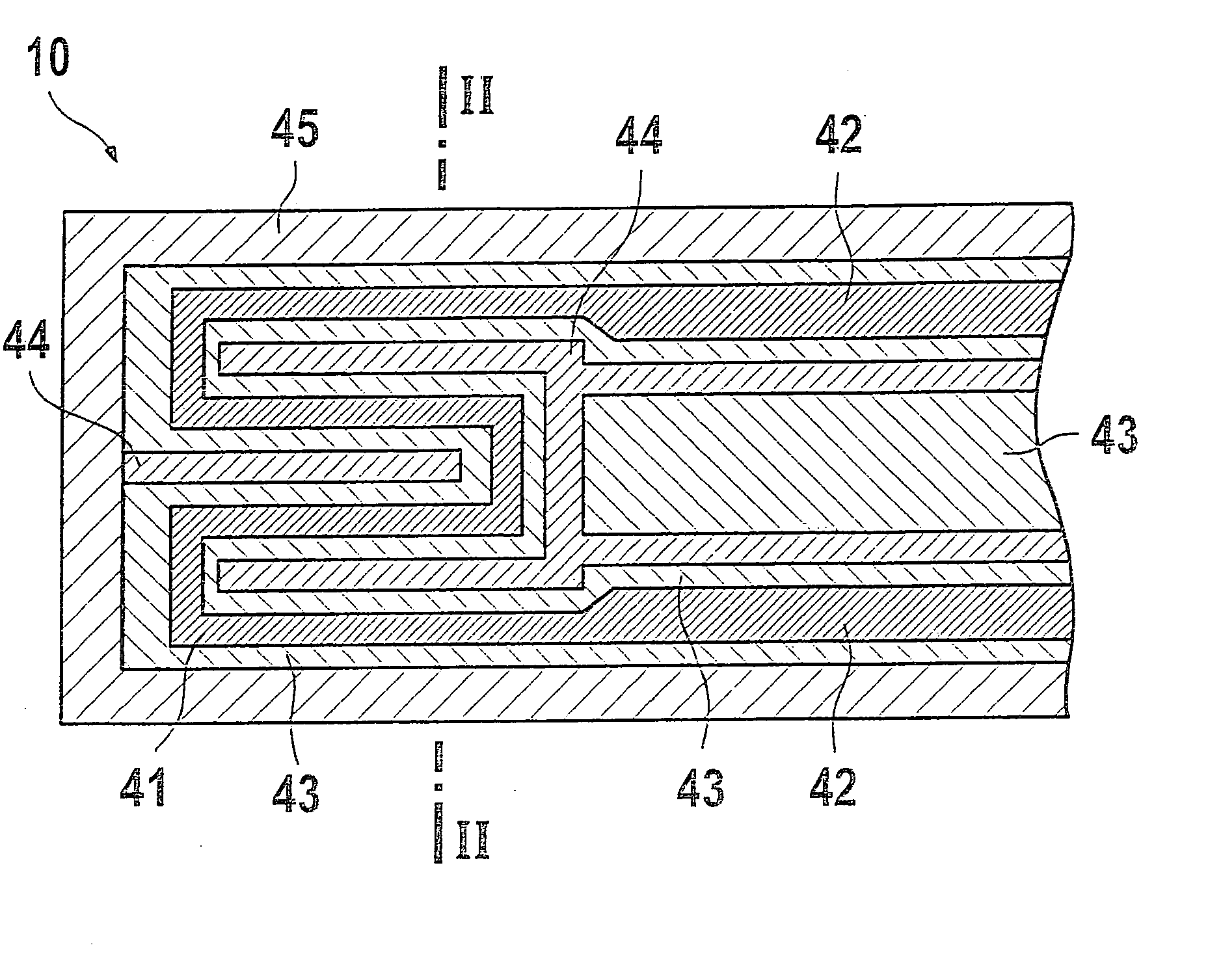Sensor element
- Summary
- Abstract
- Description
- Claims
- Application Information
AI Technical Summary
Benefits of technology
Problems solved by technology
Method used
Image
Examples
Embodiment Construction
[0013]FIG. 1 and FIG. 2 show as an exemplary embodiment of the present invention, a sensor element 10 having a first solid electrolyte sheet 21, a second solid electrolyte sheet 22, a third solid electrolyte sheet 23, and a fourth solid electrolyte sheet 24.
[0014] A reference gas space 35 containing a reference gas is formed in third solid electrolyte sheet 23. For this purpose, reference gas space 35 is connected to the surrounding atmosphere via a channel extending longitudinally through sensor element 10 and an opening on the terminal side. A first electrode 31 is situated in reference gas space 35 on fourth solid electrolyte sheet 24. A second electrode 32 is provided on the external surface of fourth solid electrolyte sheet 24 opposite first electrode 31. First and second electrodes 31, 32 and fourth solid electrolyte sheet 24 in the area of the two electrodes 31, 32 form an electrochemical cell.
[0015] A wave-form heater 41 is situated between first and second solid electroly...
PUM
 Login to View More
Login to View More Abstract
Description
Claims
Application Information
 Login to View More
Login to View More - R&D
- Intellectual Property
- Life Sciences
- Materials
- Tech Scout
- Unparalleled Data Quality
- Higher Quality Content
- 60% Fewer Hallucinations
Browse by: Latest US Patents, China's latest patents, Technical Efficacy Thesaurus, Application Domain, Technology Topic, Popular Technical Reports.
© 2025 PatSnap. All rights reserved.Legal|Privacy policy|Modern Slavery Act Transparency Statement|Sitemap|About US| Contact US: help@patsnap.com


